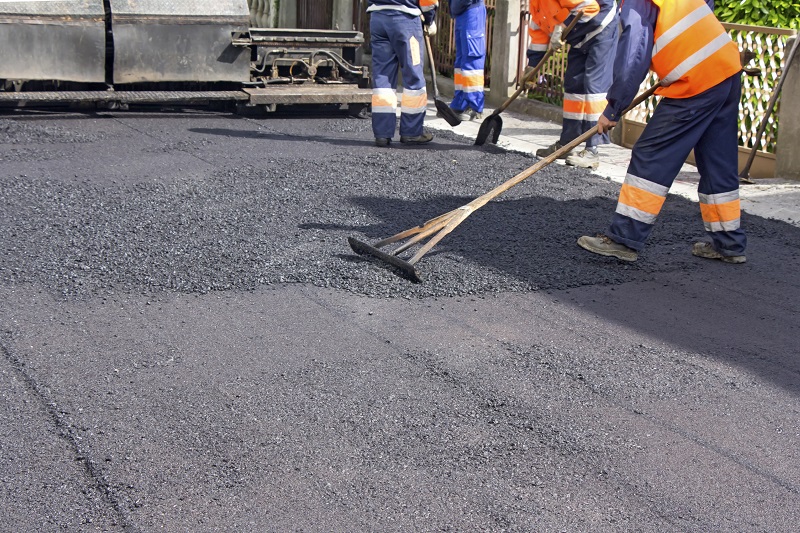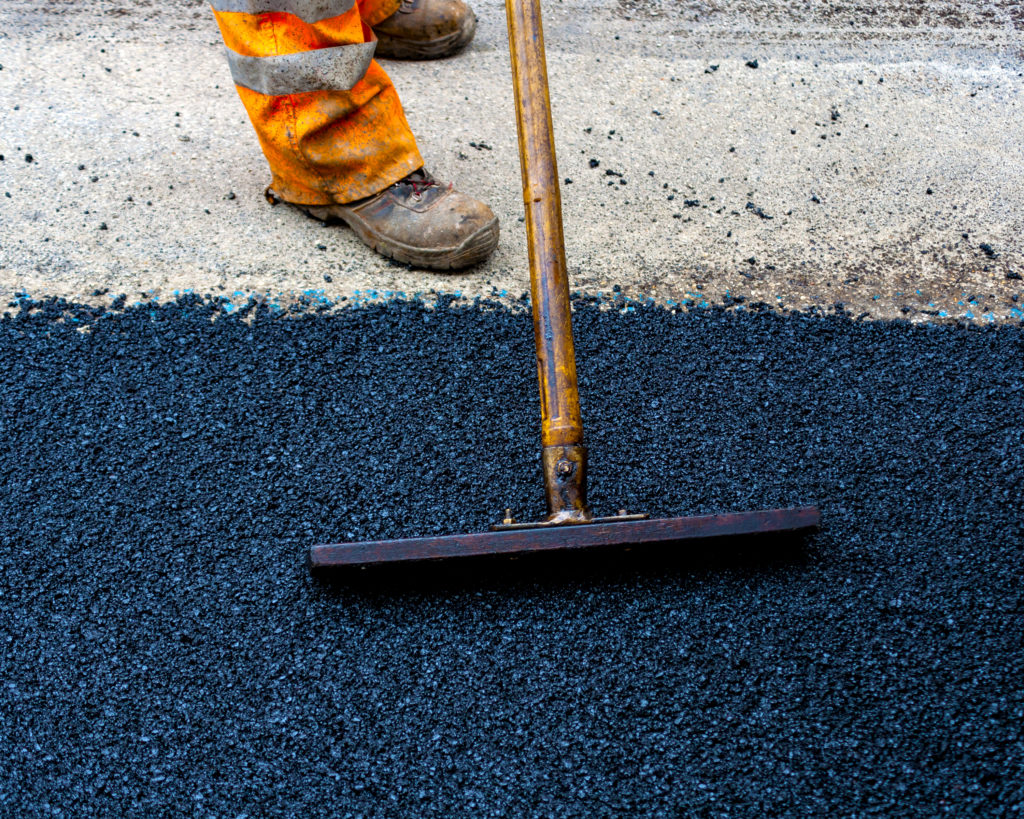Experience the Difference: Hot Mix Asphalt Paving for Regrading Projects
Experience the Difference: Hot Mix Asphalt Paving for Regrading Projects
Blog Article
Unlocking the Secrets of Hot Mix Asphalt Technology
Discovering the midsts of hot mix asphalt modern technology discovers a world where specific solutions and thorough processes merge to shape our roadways and facilities. The fusion of aggregates, fillers, and binders isn't simply a construction job but a critical orchestration of toughness and efficiency.
Value of Hot Mix Asphalt
Warm Mix Asphalt plays an important duty in contemporary framework development because of its durability and cost-effectiveness. As one of the most commonly utilized leading material for roads, freeways, and parking area, Warm Mix Asphalt offers a series of advantages that contribute to its value in building and construction projects. One crucial benefit is its ability to endure hefty traffic loads and extreme climate condition, offering a reputable and durable surface area for transportation networks. Additionally, Hot Mix Asphalt is economical in both first construction and long-term maintenance, making it a favored option for lots of framework tasks.
The durability of Warm Mix Asphalt stems from its composition, which consists of aggregates, binder, and filler products that are very carefully selected and blended to meet details performance requirements. Generally, the significance of Warm Mix Asphalt in infrastructure growth can not be understated, as it proceeds to be a keystone of modern building and construction practices.
Elements of Asphalt Mixes
The composition of asphalt blends includes meticulously chosen accumulations, binder, and filler materials that are critical for accomplishing details performance demands. Accumulations are the main part of asphalt mixes, offering toughness and stability. These aggregates can be all-natural, such as gravel or crushed rock, or artificial, like recycled materials from old pavements. The binder, commonly bitumen or asphalt cement, holds the accumulations with each other and offers adaptability and resilience to the mix. The choice of the binder is crucial as it directly influences the mix's efficiency in various weather. Fillers, such as hydrated lime or Portland concrete, are made use of to boost the mix's workability and aging resistance. Angled Parking.
The combination and proportion of these components play a significant role in identifying the high quality and performance of the asphalt mix. Engineers thoroughly develop the mix to meet particular requirements, considering elements like traffic volume, climate problems, and sidewalk life-span. Appropriate choice and balancing of aggregates, binder, and fillers are important for creating durable, long-lasting asphalt pavements.
Combining and Manufacturing Methods

Once the aggregates are selected, the binder, frequently asphalt cement, is included in bind the materials together. The binder's high quality and quantity considerably affect the mix's strength, flexibility, and resistance to ecological aspects. Furthermore, fillers like hydrated lime or Rose city concrete may be incorporated to enhance certain qualities of the asphalt mix, such as its workability or dampness resistance.
During production, the aggregates and binder are heated, commonly between 250-325 ° F(121-163 ° More about the author C ), to assist in mixing and make certain correct coating of the accumulations. The blending process must be detailed to accomplish a homogeneous combination that advertises the desired efficiency attributes of the asphalt. Various strategies, such as batch blending or drum mixing, are used to accomplish consistent and high-grade asphalt blends for building tasks.
Aspects Affecting Asphalt Efficiency
Factors affecting asphalt performance include an array of variables that affect the durability, durability, and overall high quality of asphalt sidewalks. One essential variable is the quality of products used in the asphalt mix. The type and resource of aggregates, the binder high quality, and the ingredients all play a significant function in establishing the performance of the asphalt sidewalk. The rank of aggregates is important as it influences the mix's security, workability, and resistance to cracking and rutting.

Environmental conditions additionally influence asphalt efficiency. Temperature level variations, wetness seepage, and web traffic lots can all impact the structural honesty of the pavement. Style factors to consider, such as pavement thickness and water drainage, are essential in making sure the lasting performance of the asphalt pavement. By very carefully considering these elements, designers and service providers can optimize asphalt performance and improve the life span of sidewalks.
Sustainable Practices in Asphalt Technology

Furthermore, the development of warm-mix asphalt (WMA) innovations has actually acquired grip over the last few years. WMA permits for the production and positioning of asphalt mixes at reduced temperature levels contrasted to standard hot-mix asphalt, leading to decreased why not look here power intake and greenhouse gas discharges. Additionally, making use of permeable asphalt mixes can help minimize stormwater overflow issues by permitting water to infiltrate through the sidewalk and into the ground, advertising natural water purification and charge processes. By applying these sustainable techniques, the asphalt market can add to building an extra durable and environmentally pleasant infrastructure network.
Conclusion
In conclusion, hot mix asphalt innovation plays a critical role in modern infrastructure development due to its toughness and cost-effectiveness. By meticulously stabilizing parts, using appropriate blending methods, and taking into consideration different variables, designers can develop high-grade asphalt mixes that endure hefty traffic loads and harsh weather. Embracing sustainable methods, such as making use of warm-mix innovations and recycled products, even more enhances the environmental kindness of asphalt innovation.
Mixing and production methods in warm mix asphalt modern technology entail the precise combination and processing of accumulations, binder, and fillers to produce a sturdy and high-performance asphalt mix.Factors affecting asphalt performance encompass an array of variables that influence the longevity, durability, and general top quality of asphalt pavements. Sustainable methods in asphalt innovation include numerous initiatives aimed at minimizing the ecological influence of asphalt manufacturing and paving procedures. By incorporating redeemed asphalt pavement (RAP) and recycled asphalt tiles (RAS) into new asphalt mixes, the industry can considerably decrease the consumption of raw products and power, while additionally lowering land fill waste.
WMA permits for the manufacturing and placement of asphalt mixes at lower temperatures contrasted to typical hot-mix asphalt, resulting in decreased power intake and greenhouse gas exhausts.
Report this page